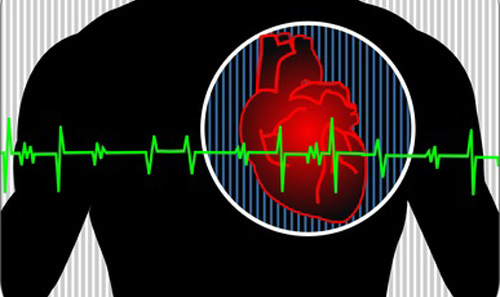Scientists from the Washington University School of Medicine say they have linked so-called junk DNA to heart failure. They published their study (“Deep RNA Sequencing Reveals Dynamic Regulation of Myocardial Noncoding RNAs in Failing Human Heart and Remodeling With Mechanical Circulatory Support”) in Circulation.
Junk DNA was long thought to have no important role in heredity or disease because it doesn’t code for proteins. But emerging research in recent years has revealed that many of these sections of the genome produce noncoding RNA molecules that still have important functions in the body. They come in a variety of forms, some more widely studied than others. Of these, about 90% are called long noncoding RNAs (lncRNAs), and exploration of their roles in health and disease is just beginning.
The Washington University group performed a comprehensive analysis of all RNA molecules expressed in the human heart. The researchers studied nonfailing hearts and failing hearts before and after patients received pump support from left ventricular assist devices (LVAD). The LVADs increased each heart's pumping capacity while patients waited for heart transplants.
“We took an unbiased approach to investigating which types of RNA might be linked to heart failure,” said senior author Jeanne M. Nerbonne, Ph.D., the Alumni Endowed Professor of Molecular Biology and Pharmacology. “We were surprised to find that long noncoding RNAs stood out. In fact, the field is evolving so rapidly that when we did a slightly earlier, similar investigation in mice, we didn't even think to include long noncoding RNAs in the analysis.”
In their study, the researchers found that unlike other RNA molecules, expression patterns of long noncoding RNAs could distinguish between two major types of heart failure and between failing hearts before and after they received LVAD support.
“The myocardial transcriptome is dynamically regulated in advanced heart failure and after LVAD support. The expression profiles of lncRNAs, but not mRNAs or miRNAs, can discriminate failing hearts of different pathologies and are markedly altered in response to LVAD support,” wrote the researchers. “These results suggest an important role for lncRNAs in the pathogenesis of heart failure and in reverse remodeling observed with mechanical support.”
“We don't know whether these changes in long noncoding RNAs are a cause or an effect of heart failure,” said Dr. Nerbonne. “But it seems likely they play some role in coordinating the regulation of multiple genes involved in heart function.”
Dr. Nerbonne and her colleagues plan to continue to work closely with the Washington University Translational Cardiovascular Biobank & Repository to facilitate studies of long noncoding RNAs in other cardiac conditions. Specifically, they are interested in atrial fibrillation, the most common irregular heart rhythm, and in comparing adult versus pediatric heart failure, an analysis that may illuminate the role of noncoding RNA in the heart's early development.



